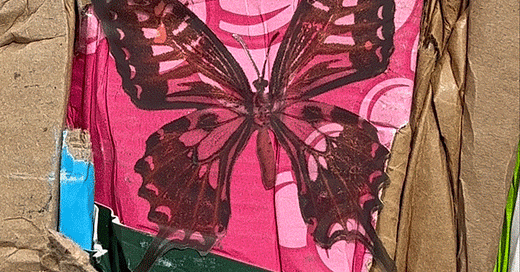You buy a canvas with aspirations of unleashing your creative masterpiece. You bring it home, get everything set up, and then…
Nothing.
You stare into the blank white emptiness.
Nothing.
Your mind begins to spiral.
Your good intentions turn to rage because this innocent blank canvas has somehow managed to uncover your deepest fear… that you aren’t as special as you thought you were.
But you can’t blame the canvas. So you blame yourself. “What’s wrong with me? I guess I’m not an artist after all.” Then we give up. Silently, of course, we don’t want to draw attention to our failure. We put the canvas in the closet, out of sight, next to the guitars, how-to books, and other abandoned artifacts of prior ambition. It happens to every artist, so how do you prevent it?
The answer might be to…
Stop buying blank canvases. Realize that you are surrounded by surfaces infinitely more interesting than anything stocked on the shelves of corporate art supply stores. And some of these surfaces, the ordinary ones, are actually invisible to the people who are enamored by the commonly recommended “professional” tools. These surfaces may be unsexy, non-traditional, and unapproved for your intended use, but they whisper to you, hoping you notice them. And once you hear the invitation, you realize you are finally ready to make your mark. As I always say, “Beauty hides in plain sight.”
Stay creative. Your friend,
Ade
P.S. I realize not everyone in my audience identifies as an artist so I’d be curious if this advice generalizes to other practices. Swap out “canvas” with “blank screen, new product, or whatever the equivalent is in your area of expertise and report back if the metaphor still works.






I love to sew with upcycled materials (I mainly make bike bags) because it sparks so much creativity. A random little pocket? I’ll use it! A mismatched zipper? Even better! Your advice makes me want to incorporate this into all of my creative activities!